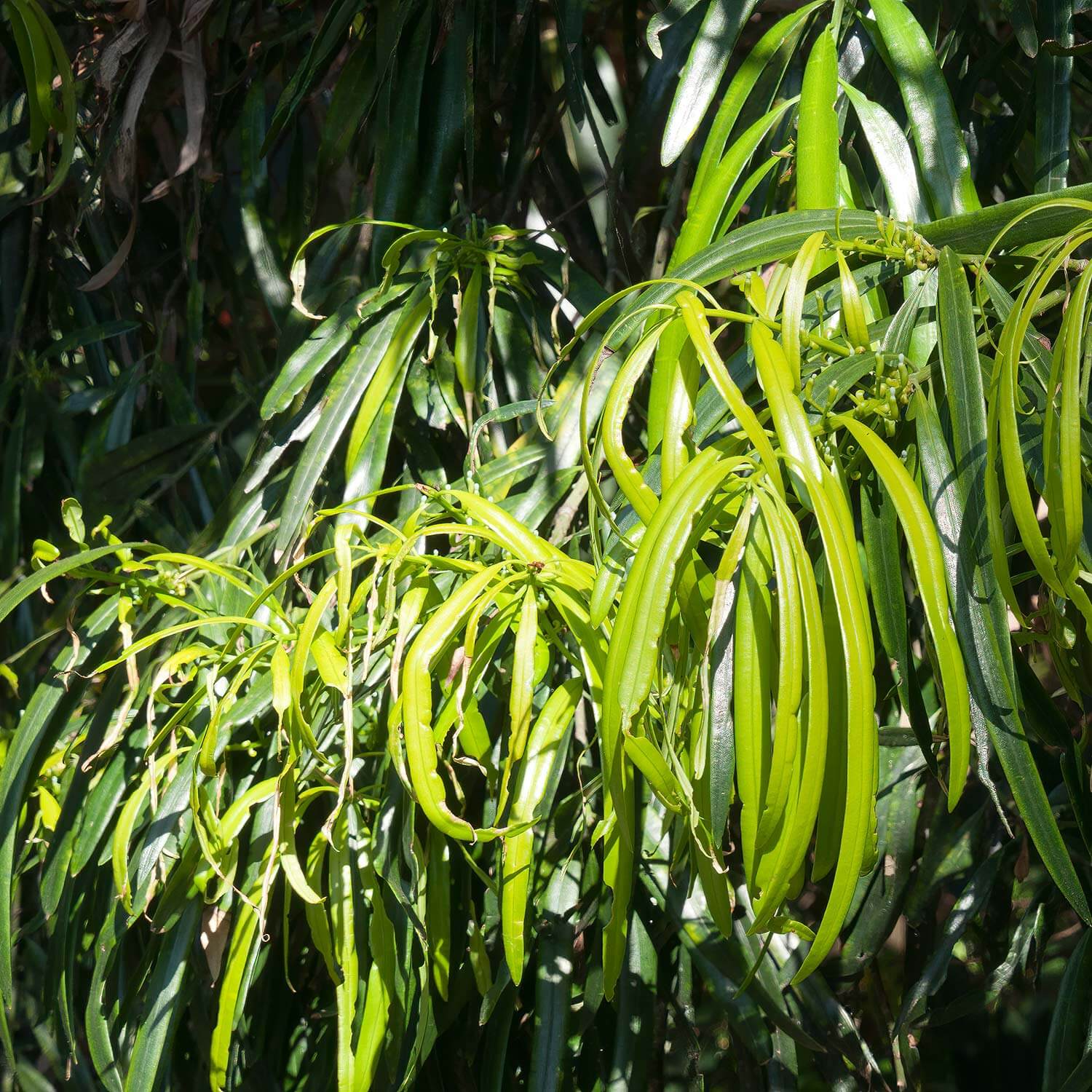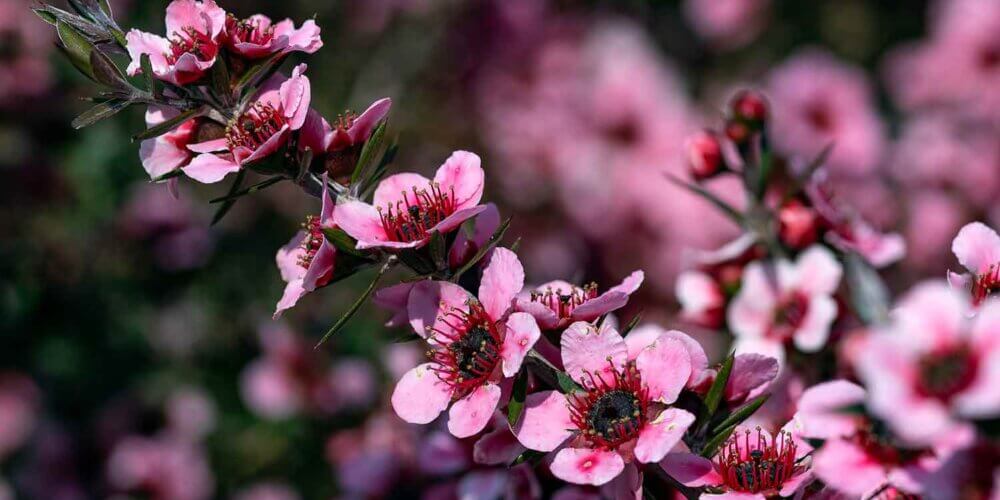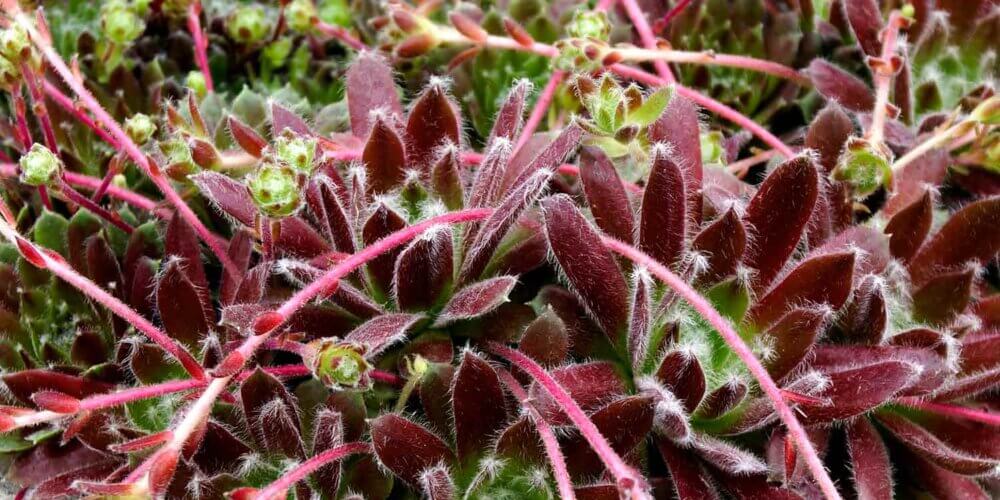
About Geijera parvifolia (Australian Willow)
This Australian native evergreen tree is called Geijera parvifolia. Commonly called Australian Willow, this tree is cold hardy to temperatures as low as 15-20 degrees Fahrenheit and is both wind and drought resistant. Reaching an average mature landscape size of 20-25′ high by 15-20′ wide, this tree grows at a fast rate growing as much as 6-10′ per year.
As a young tree this variety has an oval shape but with age, its strong inner branches reach upright while its pendulous outer branches arch with the same effect as a Weeping Willow tree. Atop its branches droop narrow, long 4-6″ leaves, light green in color that are sweetly perfumed. Clusters of creamy white flowers emerge starting in the spring that can last into the fall season. You can expect this tree to attract pollinators and local wildlife.
Care and planting instructions
Plant Geijera parvifolia in an area that receives full sun exposure using a well draining soil. Water regularly after planting to help establish its roots, then reduce frequency to weekly. Once established, this variety is drought tolerant and resistant to strong winds and below freezing temperatures. Prune back any broken or unsightly branches for a cleaned up appearance.
Landscape design ideas
Australian Willow is a great alternative to a Weeping Willow for its similar look but more compact size. This variety is a logical choice for residential landscape designs seeking an interesting focal plant or commercial projects like parking lots.


